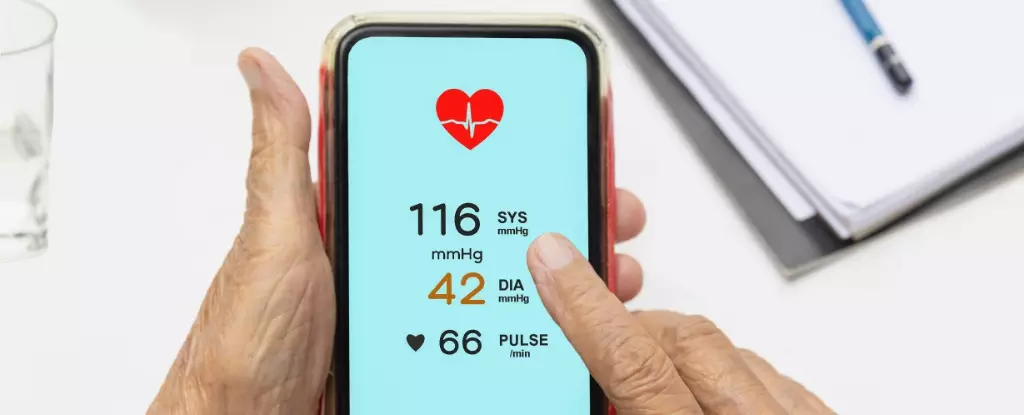High blood pressure, or hypertension, poses significant risks to individual health, contributing to serious conditions like heart disease and kidney failure. Often referred to as a “silent killer,” this condition frequently goes undetected in millions around the globe. The challenge is compounded by limited access to healthcare facilities, especially in underserved communities. This disparity in access not only hampers early diagnoses but also restricts proactive health measures that could potentially save lives.
Recent innovations in technology are offering hope to individuals who may not have regular access to medical care. A breakthrough app developed by a research team at the University of Pittsburgh is harnessing the capabilities of modern smartphones to estimate blood pressure remotely. This innovative approach seeks to democratize health monitoring, allowing individuals to take charge of their health from the convenience of their pockets.
Traditional blood pressure measurement relies on instruments like sphygmomanometers, which utilize a cuff to apply pressure to the arm, determining systolic and diastolic pressures through both mechanical and auditory means. While highly effective, such tools require professional handling and can be logistically challenging for many, especially those in remote or underserved areas.
The smartphone app designed by the Pittsburgh team takes a radically different route. Instead of requiring specialized equipment, the application leverages the sensors that are ubiquitous in smartphones today, such as accelerometers, cameras, and touch sensors. By integrating these existing technologies, the app can derive an estimate of pulse pressure through finger movements and the gravitational effects on blood flow.
The process involves instructing users to adjust their hand positioning and apply specific touches on the smartphone’s touchscreen. These actions affect blood flow and pressure, allowing the app to translate the combined data into a pulse pressure reading. As biomedical engineer Vishaal Dhamotharan explains, this method creatively utilizes hydrostatic changes that occur in the body when the hands are elevated, translating them into valuable health information.
One of the compelling features of this app is its potential to provide much-needed health monitoring to populations lacking access to conventional medical care. Many individuals in these communities may not even possess traditional blood pressure cuffs or have the opportunity for routine physician consultations. With the majority of people owning smartphones, this app symbolizes a meaningful step toward narrowing the health equity gap.
Ramakrishna Mukkamala, a leading figure in this research, emphasizes the importance of such innovations in areas where healthcare resources are scarce. The introduction of a device that can deliver vital health metrics without the need for specialized training or costly equipment means that more people can be alerted to potential health issues, allowing them to seek timely medical intervention.
Initial trials involving 24 participants showcased promising results, with the app delivering pulse pressure readings within an acceptance range of approximately 8 mm Hg. However, the developers recognize that for such a tool to become a trusted resource, ongoing refinements in accuracy are critical. Continued research will likely result in a more precise reading, enhancing the app’s reliability as a medical device.
As the team pushes forward, they face the challenge of shifting perceptions around using pulse pressure as an effective indicator of blood pressure health. The goal is clear: developing a portable, cuffless measurement system that can stand shoulder-to-shoulder with conventional methods. As Sanjeev Shroff highlights, this represents a pivotal future — the “holy grail” of blood pressure measurement.
The convergence of technology and healthcare is set to reshape how we monitor and manage our health. The smartphone app developed by researchers at the University of Pittsburgh ushers in a new era of accessibility, potentially allowing millions to take charge of their hypertensive health more effectively than ever before. With advancements in accuracy and user engagement, the dream of widespread, efficient blood pressure monitoring may soon transcend from aspiration to reality.

